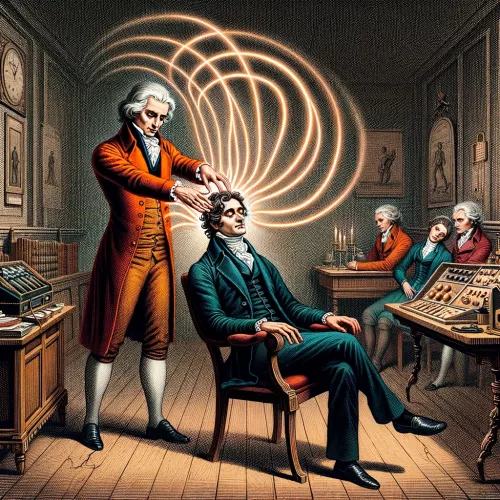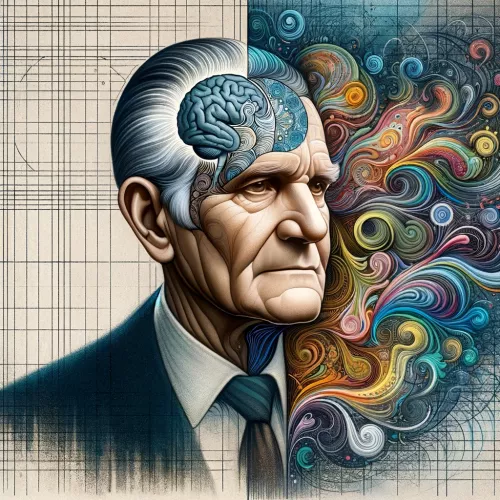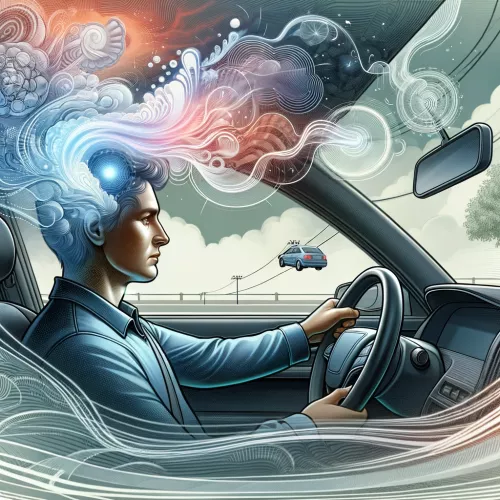Theory of Mind
The theory of mind is a theoretical model of the mind used to explain the observable phenomena known as hypnosis. Whilst science is only starting to discover the various chemical changes in the brain when someone is under the effects of hypnosis, hypnosis itself has been around for as long as mankind, with the phenomena being interpreted in many different ways throughout history.
Whilst the east believed in the concept of the spiritual mantra to influence the subconscious mind, it wasn’t until the time of Anton Mesmer that hypnosis was studied and applied in a non-spiritual sense through a process known as ‘animal magnetism’. Mesmer didn’t realise it was placebo that was causing the phenomena he believed to be animal magnetism, and instead applied an incorrect explanation to the phenomena he observed.

An illustration of Anton Mesmer using animal magnetism on a patient, with visible magnetic waves between his hands and the patient's head.
James Braid was the first person to recognise hypnosis for what it was, a process not related to magnets but rather a process that occurred due to thought processes within the mind. It was then Milton Erickson who developed the modern understanding of hypnosis that we have today, particularly in relation to the conscious and subconscious mind being two distinct parts of the mind, with the critical mind separating the two. From Erickson’s teachings other fields related to hypnosis began to emerge (such as Neurolinguistic Programming) and a new field of modern study into hypnosis was born.

A portrait of Milton Erickson with abstract representations of the conscious and subconscious mind.
Before attempting to apply hypnosis, it is important to understand how it works. I will attempt to explain the processes involved in the most basic sense I can.
In hypnosis, we think of the mind as being separated into both the conscious and the subconscious mind. The conscious mind is what controls all of our current thinking and behaviour. In order for you to think of things analytically or critically, you need to use your conscious mind. Your consciousness is the part of your mind that is aware that you’re sitting down in front of a computer and reading this post. Simply put, anything that you consciously know about, is stored within your consciousness.
The subconscious part of our mind is where most of our memory is stored, and where the majority of our thoughts take place (it is believed our subconscious comprises well over 80% of our mind). Any skills that you learn and perform automatically without the need for conscious thinking are stored within your subconscious. You may recall how difficult it was to read and write when you were a child, or how difficult it was learning how to control a motor vehicle for the first time, however with experience your subconscious learns from the input your consciousness receives. You don’t need to consciously think about the meaning of certain words or letters anymore, as your subconscious automatically associates the words with meanings due to your learned behaviour.

Visual metaphor of the conscious mind as a small boat floating on the vast ocean of the subconscious.
The thing with our subconscious is that we’re not aware of what thoughts are taking place within it. If we were aware of the thoughts then they’d no longer be subconscious thoughts, they’d be conscious thoughts instead. This is one of the reasons that people often don’t remember being hypnotized. The deeper we fall into hypnosis, the deeper we delve into our subconscious, and the less we remember.
Have you ever driven down a familiar road and then later not remembered the trip at all? This was due to the fact that your subconscious was doing the driving for you. You were so used to driving down the same road that your subconscious automatically did the driving for you, without the need of much conscious thought or awareness.

Illustration of someone driving with a translucent overlay representing the subconscious taking over.
Now what determines what passes from our conscious mind into the subconscious mind? The critical mind.
The critical mind is the part of our mind that analyzes new suggestions that our consciousness receives and determines whether or not we should act upon those suggestions. If someone were to walk up to you in a public place and say “pull down your pants”, the critical part of your mind would analyze that suggestion and determine that it would be a bad one, and would reject the suggestion. This means the suggestion would leave your conscious mind and would not enter into your subconscious. There is no danger of you automatically pulling down you pants and forgetting about it, because the critical mind never committed the suggestion to your subconscious.
Now if on the other hand you went to a hypnotherapist in order to treat a phobia of some form, and the therapist told you to fall asleep when they clicked their fingers, then your critical mind would also analyze this suggestion. Your critical mind would most likely determine that the hypnotherapist was there to help you, and needed to be trusted, and therefore would allow such a suggestion to be committed to your subconscious. When the hypnotherapist clicked their fingers, your subconscious would then automatically trigger the suggestion and you’d fall asleep without the need to consciously do so.

An image showing a hypnotherapist with their hand poised to click their fingers and a patient in a relaxed state, ready to fall asleep.
This is essentially what hypnosis is, however if you don’t understand what I talked about then don’t worry, you most likely won’t understand it the first time. All you really need to remember is that the mind is separated into the conscious and the subconscious, with the critical mind separating the two. I go into further detail about the conscious, subconscious and critical mind, and how they relate to the theory of mind, in my course.

